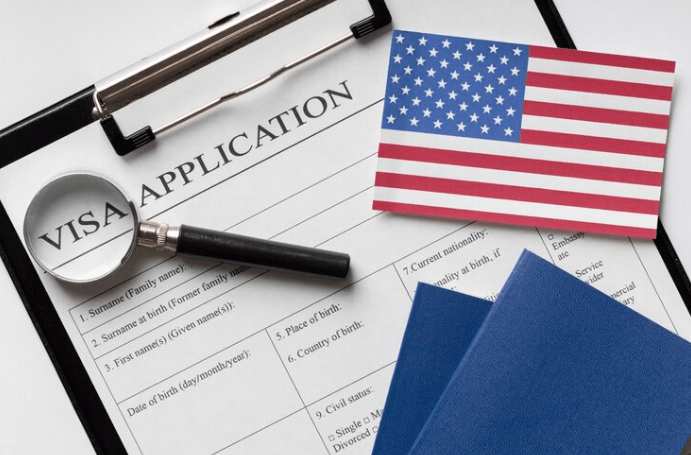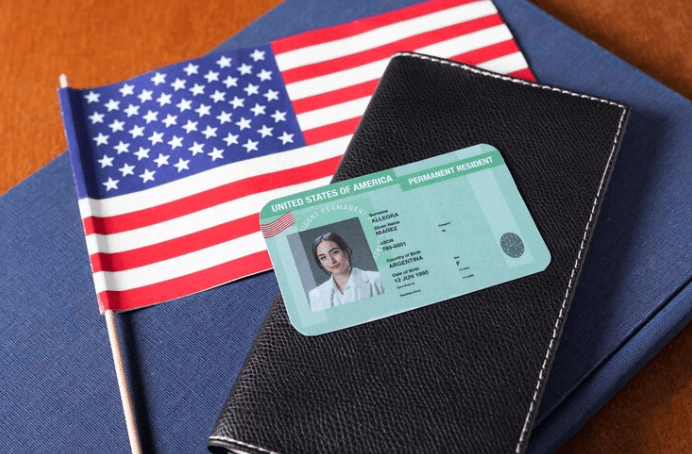The United States, a land of diverse cultures and opportunities, has long been a beacon for individuals seeking a better life, career advancements, and educational excellence. At the heart of this pursuit is the US immigration system, a complex framework designed to manage the flow of people entering the country for various reasons – from tourism and study to work and permanent residency.
Understanding this system, particularly the visa and job approval process, is crucial for anyone aspiring to live and work in the US.
The US immigration system is governed by a set of laws and regulations that determine who can enter the country, for how long, and for what purpose. It’s a system characterized by a variety of visa categories, each with its own set of rules and requirements.
For those seeking employment in the US, navigating this system can be a daunting task. The process involves not just understanding the different types of visas available but also securing a job offer from a US employer, fulfilling the legal requirements, and successfully completing the visa application process.
The importance of understanding the visa and job approval process cannot be overstated. It’s not just about legal compliance; it’s about making informed decisions that affect one’s career and life. A misstep in the application process or a misunderstanding of visa conditions can lead to delays, denials, or even deportation.
Therefore, it’s essential for potential immigrants and workers to be well-informed about the intricacies of the system to enhance their chances of success.
Understanding Different Visa Categories
The US offers two primary categories of visas: non-immigrant and immigrant visas. Non-immigrant visas are for temporary stays in the US. These include tourist visas, student visas, and business visas. On the other hand, immigrant visas are for those intending to live permanently in the US.
A significant portion of the visa system is dedicated to employment-based visas, catering to various skills, professions, and employment situations. These visas are crucial for the US economy as they bring in skilled workers, fill employment gaps, and contribute to the country’s cultural diversity.
Employment-Based Non-Immigrant Visas
- H-1B Visa: This is perhaps the most well-known work visa, designed for specialized occupations. It requires the applicant to have a higher education degree or its equivalent. The H-1B visa is widely used in sectors like IT, finance, engineering, and healthcare.
- L-1 Visa: The L-1 visa is for intra-company transferees who are managers, executives, or have specialized knowledge. This visa allows a foreign worker from an international company to be transferred to a US branch of the same company.
- O-1 Visa: This category is for individuals with extraordinary ability or achievement in sciences, arts, education, business, or athletics.
- TN Visa: Under the North American Free Trade Agreement (NAFTA), citizens of Canada and Mexico can be employed in the US in certain professional occupations.
Employment-Based Immigrant Visas
These visas are for those seeking permanent residency based on employment. They are categorized into EB-1, EB-2, EB-3, EB-4, and EB-5, each catering to different skills and requirements, from extraordinary ability and advanced degree professionals to skilled workers and investors.
Understanding the specific requirements and application processes for each of these visa categories is vital. The United States Citizenship and Immigration Services (USCIS) provides comprehensive information on each visa type, including eligibility criteria, application procedures, and all necessary documentation. For detailed information on each category, applicants can visit the USCIS Visa Categories page.
In conclusion, the US immigration system offers various pathways for individuals seeking to work in the country. By understanding the different visa categories and their specific requirements, applicants can better prepare themselves for a successful immigration journey.
The Job Search in the US
Finding employment in the United States can be a challenging yet rewarding journey. It requires a strategic approach, especially for those seeking jobs that could lead to sponsorship for an employment visa.
Strategies for Finding US-Based Employment
- Research and Target Industries: Start by identifying industries and companies that are more likely to sponsor visas. Sectors like technology, engineering, healthcare, and finance often have a higher demand for skilled foreign workers.
- Utilize Job Search Platforms: Websites like LinkedIn, Indeed, and Glassdoor are excellent resources for job hunting. They allow you to search for jobs by location, industry, and job title, and you can often filter results to show companies open to sponsoring visas.
- Customize Your Resume and Cover Letter: Tailor your resume and cover letter to the US job market. Highlight your unique skills, experiences, and achievements that align with the job requirements.
- Apply for Jobs Strategically: Focus on applying to jobs where your skills are in high demand but local talent is scarce. This increases your chances of getting noticed and considered for a visa sponsorship.
Networking and Leveraging Online Platforms
- Build a Professional Network: Networking is key in the US job market. Attend industry conferences, join professional associations, and participate in webinars and workshops.
- Leverage LinkedIn: Use LinkedIn to connect with industry professionals, join groups, and engage in discussions. A strong LinkedIn profile can be a powerful tool in your job search.
- Informational Interviews: Reach out to professionals in your field for informational interviews. This can provide valuable insights into the industry and potentially lead to job referrals.
Understanding the Role of Sponsorship in Employment Visas
Employment visas in the US often require sponsorship from a US employer. This means the employer is willing to petition on your behalf for a visa. It’s important to understand that not all employers are equipped or willing to sponsor visas due to the cost and legal complexities involved. Therefore, targeting your job search towards companies known for sponsoring visas can be more fruitful.
Navigating the Visa Application Process
Step-by-Step Guide on Applying for a Visa
- Secure a Job Offer: The first step is to obtain a job offer from a US employer willing to sponsor your visa.
- Employer Files a Petition: Your employer must file a petition with the United States Citizenship and Immigration Services (USCIS). The type of petition varies depending on the visa category.
- Wait for Petition Approval: Once the petition is filed, you must wait for it to be approved by USCIS. This can take several months.
- Apply for the Visa: After petition approval, you can apply for the visa at a US Embassy or Consulate in your home country. This involves filling out visa application forms, paying the visa fee, and scheduling a visa interview.
- Attend the Visa Interview: During the interview, a consular officer will determine your eligibility for the visa.
- Visa Issuance: If your visa application is successful, you will be issued a visa to travel to the US.
For detailed information on the visa application process, visit the Employment-Based Immigrant Visas page.
Labor Certification and Petition Filing
Explanation of Labor Certification (PERM)
For certain employment-based visas, the employer must obtain a labor certification from the Department of Labor (DOL). This process, known as PERM (Program Electronic Review Management), requires the employer to demonstrate that there are no qualified US workers available for the position and that hiring a foreign worker will not adversely affect the wages and working conditions of similarly employed US workers.
Process of Filing an Immigrant Petition for Alien Worker (Form I-140)
After obtaining the labor certification, the employer must file Form I-140, Immigrant Petition for Alien Worker, with USCIS. This form is used to petition USCIS to classify the foreign worker under a specific immigrant visa category.
For more information on the process and requirements for an immigrant work visa, visit the USAGov Immigrant Work Visa page.
Navigating the job search and visa application process in the US requires patience, diligence, and a thorough understanding of the legal requirements. By following these steps and utilizing available resources, prospective immigrants can enhance their chances of securing employment and successfully obtaining a visa.
VI. Preparing for the Visa Interview
The visa interview is a critical step in the visa application process. It’s an opportunity for the consular officer to assess your eligibility and intentions. Here are some tips to help you prepare:
Tips for a Successful Visa Interview
- Be Well-Prepared: Gather all necessary documents, including your passport, application forms, employment documents, and any other required paperwork.
- Practice Your Answers: Be ready to clearly explain your reasons for going to the US, your plans while there, and your intention to return to your home country after your visa expires.
- Dress Professionally: First impressions matter. Dressing professionally can positively impact the tone of the interview.
- Be Honest and Concise: Answer all questions truthfully and to the point. Avoid unnecessary details unless asked.
- Understand Your Visa Category: Be clear about the type of visa you are applying for and how it relates to your purpose in the US.
Common Questions and How to Answer Them
- Why do you want to go to the US? – Focus on your professional goals and how the opportunity aligns with your career plans.
- How long do you plan to stay in the US? – Be specific about your plans, aligning them with the duration of your visa.
- What are your plans after your visa expires? – Express your intention to return to your home country and continue your career or personal life there.
The Role of the Consular Officer
The consular officer’s role is to assess whether you meet the visa requirements and ensure you do not pose a risk of overstaying or violating visa conditions. They are responsible for verifying your information and intentions.
After Visa Approval: Next Steps
Understanding Visa Limitations and Conditions
Once your visa is approved, it’s crucial to understand its limitations and conditions. This includes the duration of stay, work limitations, and travel restrictions. Violating these conditions can lead to visa revocation or difficulties in future immigration applications.
Adjusting to Life in the US
Adjusting to a new country can be challenging. It involves understanding the cultural nuances, legal obligations, and day-to-day life in the US. For comprehensive guidance, refer to the Welcome to the United States Guide, which provides valuable information for new immigrants.
Renewals and Permanent Residency
Process for Visa Renewals
Visa renewals typically require you to demonstrate that you continue to meet the criteria of your visa category. This process may involve submitting updated documentation and, in some cases, attending another interview.
Pathways to Permanent Residency (Green Card)
Many employment-based visa holders aspire to obtain a Green Card. The pathways include:
- Adjustment of Status: If you are already in the US, you can apply to adjust your status to a permanent resident.
- Consular Processing: If you are outside the US, you can apply for an immigrant visa at a US consulate.
Employment-Based Green Card Process Overview
The process typically involves your employer filing a petition on your behalf, obtaining labor certification, and then applying for an immigrant visa or adjustment of status. The time frame and specific requirements vary based on the employment-based category (EB-1, EB-2, etc.).
Navigating the visa interview, understanding post-approval steps, and exploring pathways to permanent residency are crucial aspects of the US immigration process. By being well-prepared and informed, you can enhance your chances of a successful immigration experience.
Overcoming Common Challenges
Navigating the US immigration system can present various challenges, from visa delays and denials to maintaining legal status. Understanding how to address these issues is crucial for a smooth immigration experience.
Dealing with Visa Delays and Denials
- Visa Delays: Delays can be caused by administrative processing, high demand, or incomplete applications. To mitigate delays, ensure your application is complete and accurate. If you experience a significant delay, you can check your visa status online or contact the consulate where you applied.
- Visa Denials: Visa applications can be denied for various reasons, including insufficient documentation or failure to meet eligibility criteria. If your visa is denied, the consular officer will provide a reason. Depending on the grounds for denial, you may reapply or seek a waiver if applicable.
Legal Resources and Support
- Immigration Lawyers: Consulting with an immigration lawyer can be beneficial, especially in complex cases. Lawyers can provide guidance on the application process, appeals, and rights as an immigrant.
- Community Organizations: Numerous non-profit organizations offer support and resources to immigrants. They can provide legal advice, help with paperwork, and offer language and integration courses.
- Government Resources: Websites like USCIS and USA.gov provide official information and updates on immigration policies and procedures.
Maintaining Legal Status in the US
- Understand Your Visa Conditions: Be clear about the conditions of your visa, including work restrictions and stay duration.
- Timely Renewals and Status Adjustments: Apply for renewals or status adjustments well before your current visa expires to avoid lapses in legal status.
- Stay Informed About Policy Changes: Immigration policies can change, so stay informed about any updates that may affect your status.
Conclusion
Navigating the US immigration, job, and visa approval system can be a complex and challenging journey, but it’s also a path filled with opportunities for growth, learning, and new beginnings. From understanding different visa categories and mastering the job search process to preparing for the visa interview and dealing with potential challenges, each step requires patience, preparation, and informed decision-making.
The key to a successful immigration experience lies in thorough research, meticulous preparation, and staying updated on the latest immigration policies and procedures. Utilizing available resources, such as official government guides, legal assistance, and community support, can significantly ease the process.
Remember, while the journey may seem daunting, countless individuals have successfully navigated this path before you. With the right approach and mindset, you too can overcome the challenges and embrace the opportunities that come with working and living in the United States.
In conclusion, the journey through the US immigration system is not just about obtaining a visa or a job; it’s about embarking on a new chapter in life, filled with possibilities. By staying informed, prepared, and resilient, you can navigate this journey successfully and lay the foundation for a fulfilling experience in the United States.







Leave a Reply